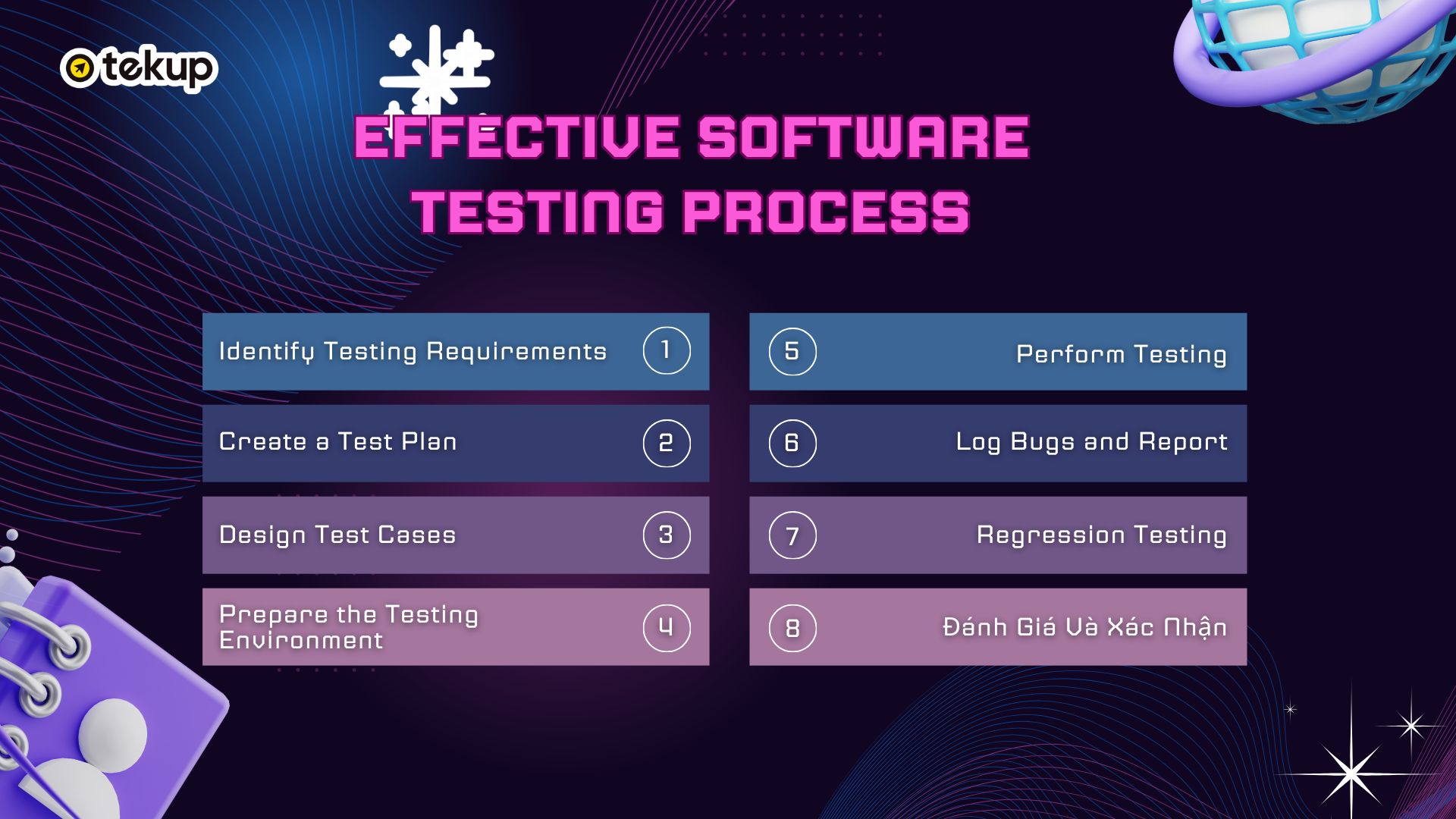Introduction to Software Testing
Software testing is an essential process in software development aimed at ensuring that the final product functions as expected, is error-free, and meets the user’s requirements. The testing process not only identifies bugs but also helps to detect potential issues, thereby improving the overall quality of the software.
In this article, we will explore the effective software testing process to ensure product quality.

Types of Software Testing
Before diving into the specific process, it is necessary to understand the types of software testing. These include:
- Unit Testing: Testing small parts of the source code (functions, modules) to ensure they work correctly.
- Integration Testing: Testing parts of the system when they are combined to ensure compatibility.
- System Testing: Testing the entire system to ensure all features work as expected.
- Acceptance Testing: Ensuring the software meets the client’s and end user’s requirements.
- Regression Testing: Retesting the software after changes to ensure no new bugs have been introduced.

The Effective Software Testing Process
The effective software testing process involves multiple continuous and systematic steps. Below are the basic steps in the software testing process:
1. Identify Testing Requirements
Before beginning the testing process, the testing team must clearly understand the project’s requirements and objectives. It is crucial to identify the client’s requirements, features to be tested, and performance-related factors. This helps the testing team understand the goal and scope of the testing process.
2. Create a Test Plan
After identifying the requirements, the next step is to create a test plan. This plan should include testing strategies, timelines, required resources, and testing tools. The test plan will also define the success criteria and expected results from the test cases.
3. Design Test Cases
In this step, the testing team designs test cases based on the system requirements and the test plan. The test cases should be written clearly and in detail to ensure that all software features are tested accurately.
4. Prepare the Testing Environment
A proper testing environment is essential to ensure effective testing. The testing environment should have all the necessary hardware, software, and data to conduct the test cases.
5. Perform Testing
This is the most important step in the testing process, where the test cases are executed according to the plan and the designed test cases. During this phase, the testing team will carry out manual or automated tests, record results, and identify bugs or issues in the software.
6. Log Bugs and Report
When bugs are discovered, the testing team needs to record detailed information about the issues and report them to the development team for fixing. Accurately logging and reporting bugs helps speed up and improve the accuracy of the repair process.
7. Regression Testing
After the development team fixes the bugs, regression testing is performed to ensure that the changes have not introduced new bugs. This helps determine whether the software still meets the original requirements and remains bug-free.
8. Evaluate and Confirm
Finally, the testing team evaluates the testing results and determines whether the software meets quality requirements. If the software does not meet the criteria, the testing process will continue until the product meets the standards.

Popular Software Testing Tools
To carry out the testing processes effectively, using supporting testing tools is crucial. Some popular testing tools include:
- Selenium: For automated web testing.
- JUnit: For unit testing in Java.
- Postman: For API testing.
- TestComplete: An automated testing tool for desktop, mobile, and web applications.
- Jira: Used for bug tracking and managing testing projects.

Benefits of Software Testing
Software testing not only helps identify bugs but also offers several other benefits such as:
- Ensuring Software Quality: Ensures the software functions correctly, reliably, and without errors.
- Cost Savings: Early bug detection helps reduce the cost of fixing issues later.
- Enhancing Customer Satisfaction: Ensures the final product meets user expectations.
- Improving Security: Helps identify security vulnerabilities in the software.

Conclusion
Software testing is an indispensable part of the software development process, helping ensure that the final product meets user expectations and requirements. An effective software testing process not only identifies bugs but also improves the overall quality of the product. By applying the correct testing process and utilizing supporting tools, businesses can develop high-quality software, optimize performance, and increase customer satisfaction.



